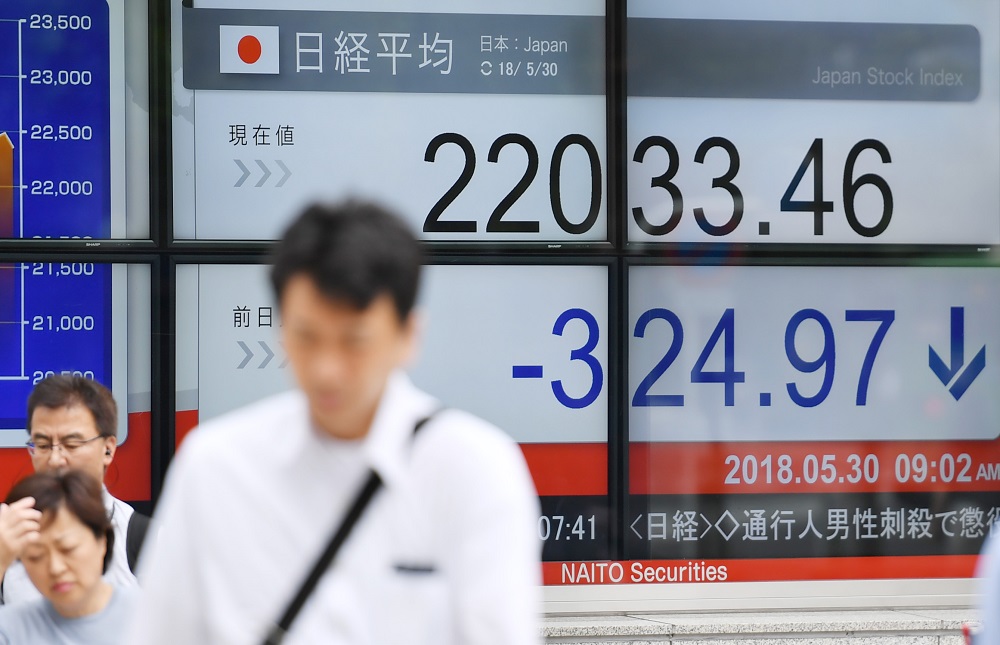How will JGB risks impact other markets?
Many analysts said JGB vulnerability woule be proving a headache for other markets as well – even treasuries.

The volatility in treasuries has been the main talking point in global bond markets this year, especially after President Trump was forced to water-down his tariffs because the bond market got a bit “yippy” in his words. But another bond market is flashing warning signs; the JGB market. And just as treasury market ‘yippyness’ can infect bond markets overseas, so JGB vulnerability is proving a headache for other markets as well – even treasuries.
The risk of higher inflation (from tariffs) and concerns about a debt-to-GDP ratio of around 100% have been two factors in the US that seem to have weighed on treasury prices in recent months. But Japan has the highest inflation and, if consumer’s price expectations are anything to go by, faces the biggest risk of a de-anchoring of inflation from the BoJ’s 2% target. It too has high debt; much higher than the US government at around 240% of GDP.
However, one notable difference is that Japan owes the vast bulk of this debt to itself; whereas around 30% of US treasuries are held externally. That makes the US dependent on the “kindness of strangers” as former BoE Governor Mark Carney once remarked about the UK. This leaves treasuries facing two risks.
The first is that foreign investors just decide that the US bond market is not worth owning anymore; or at least not on the scale that it has before.
The second is that an implosion in the JGB market could force Japan to send less of its savings overseas – to treasuries for instance – in order to pay for the bond market losses at home. The dangers to the JGB market are many. There is not just the large debt but the fact that over half of this is held by one entity; the Bank of Japan. Any concentration risk is bad, even if it is the central bank.
For a start, the functioning of the JGB market becomes impaired. This has been going on for some time but has become particularly worrisome just recently, especially at the long end of the market.
A second factor is that inflation expectations appear to have become de-anchored given that longer-term inflation expectations (5 years) amongst consumers having been between five and ten percent for a few years now on the BoJ’s own survey. Hence it seems that policy rates will have to continue to rise. If that’s not bad enough, it does not even seem that the sharp rise we’ve seen in longer-term yields this year (of around 40-bps in 10-year JGBs is not down to the inflation we have already seen, nor the BoJ’s policy tightening. Instead, the rise in yields is almost matched by the rise in the term premium; a phenomenon that we’ve seen in the US as well.
In addition to lifting policy rates the BoJ will likely continue to scale back its JGB purchases. In the last fiscal year, the BoJ actually saw its long-term bond holdings fall by JPY11.4tr to JPY574tr. That’s the biggest fall since 2008. For all these reasons, and more, Japanese yields look like a one-way bet to rise.
Steven Barrow, Head of Standard Bank G10 Strategy, forecasts 10-year yields rising another 100-bps over the next year, or so. That could be a problem for the Japanese government given hefty debt levels, but it could be an even bigger problem elsewhere on a number of levels. One is that hefty losses for investors in domestic bonds could slow down, or even reverse investment in overseas assets, such as treasuries.
Another, as we saw last August, when Japanese markets flipped over the BoJ’s late-July rate hike, is a surge in the yen. The point here is that the currency market is already very jittery about the dollar for domestic policy reasons. An external shock, from JGB market implosion, could crumple the dollar against the yen and so compound concerns about the flaky greenback and, by association, the unattractive treasury market for foreign investors.
“We already appear to be seeing a notable withdrawal of funds flowing to US assets from other Asian countries and should Japanese investors jump on this particular gravy train it could make our one-year forecast for dollar/yen to be down at 130 look far too cautious. Perhaps, with luck, a weaker dollar/yen might be the buffer that prevents a similarly steep rise in treasury yields as we expect for JGBs. Indeed, that’s our view at the moment, even if we are clinging onto it with our fingernails”, said Steven Barrow.








